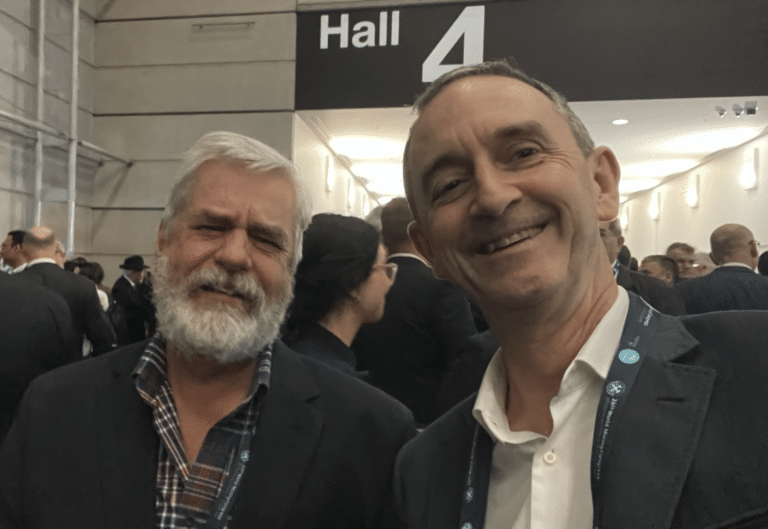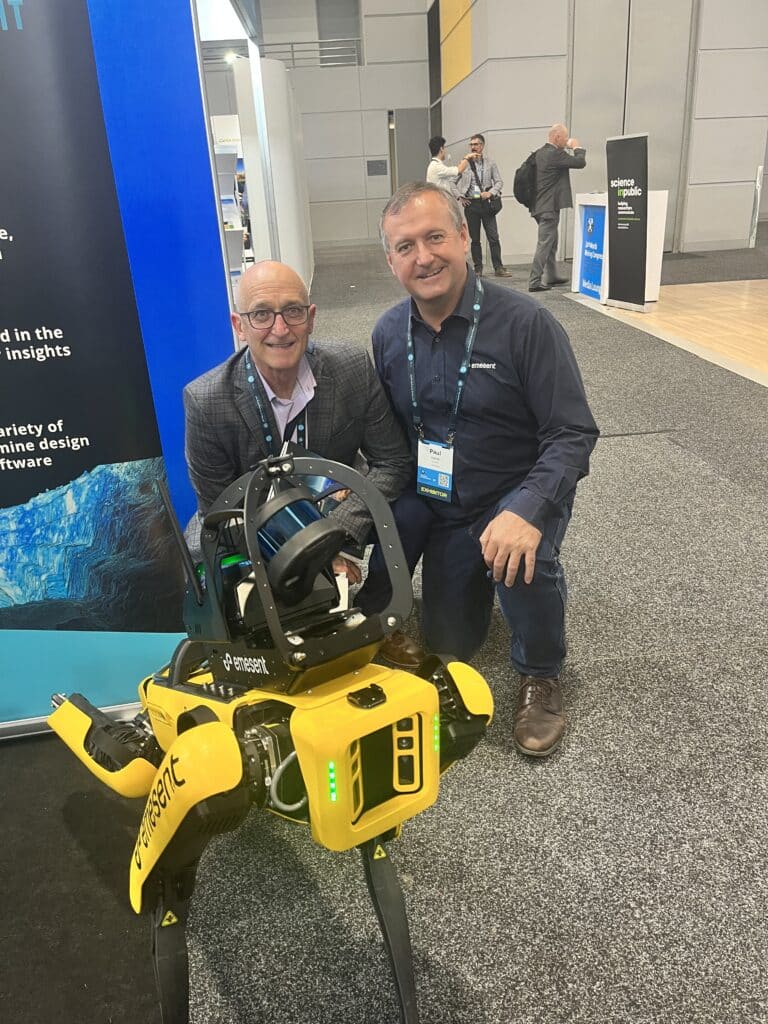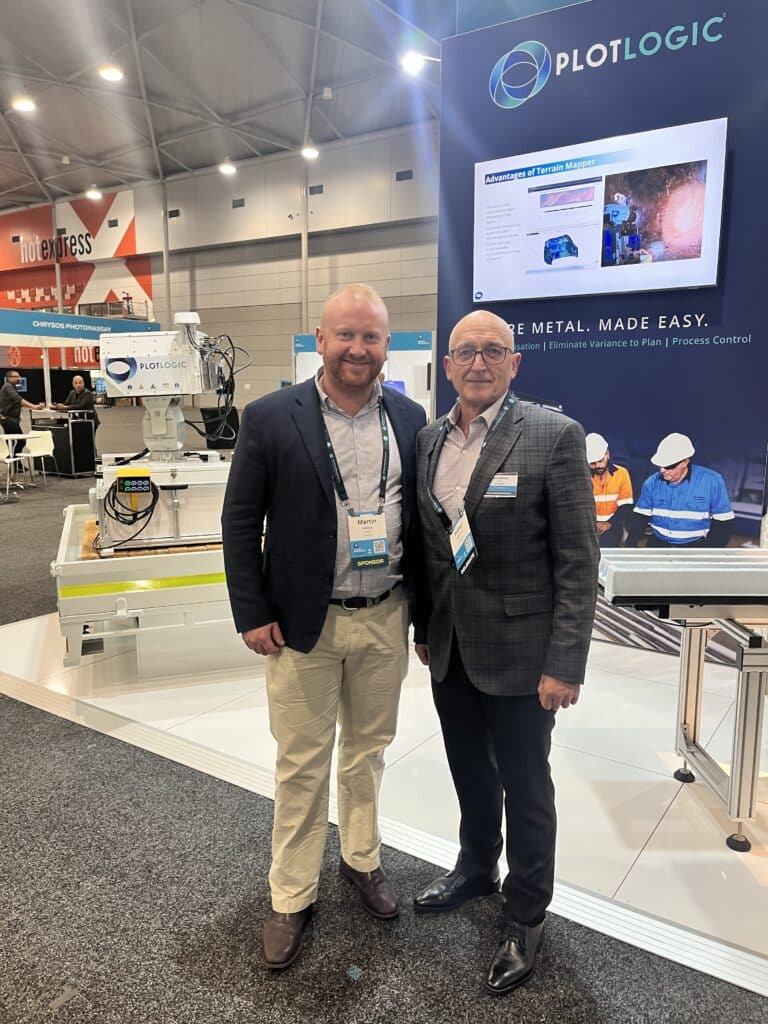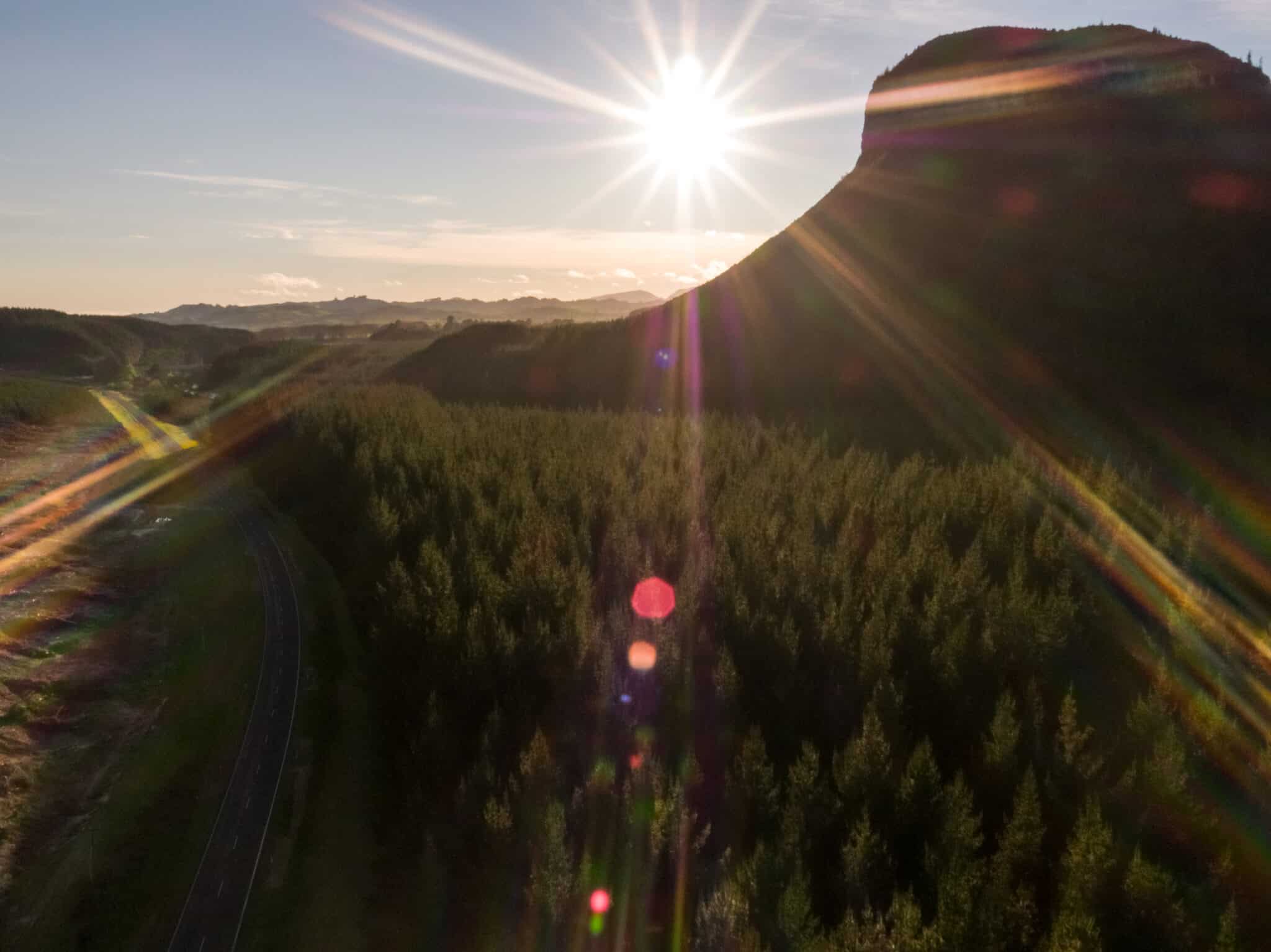Minerals provide the raw materials that help make life possible for the 8 billion people on this planet. But the industry needs to do a better job of explaining mining’s contribution to society, the former CEO of Anglo American, Mark Cutifani, told World Mining Congress 2023.
Our Seequent team joined over 3,500 people at the global congress in Brisbane to hear insights from thought leaders on how mining is at a pivotal point in the industry’s history.
Each year, on average, mines increase in depth by 40 metres while mineral grade declines by 1.5%. Lead times to permit new projects have doubled and increasing development and input costs are driving the structural costs of the industry 10% above inflation.
And compared to 100 years ago, operators have to move 16 times the amount of waste and consume 16 times the amount of energy to produce one tonne of copper.
“Mining is a hugely complex industry and it’s becoming increasingly difficult to find and extract new resources,” says Graham Grant, CEO at Seequent.

Our CEO Graham Grant met Dale Sims, Australian Institute of Geoscientists, who purchased the third ever licence for our Leapfrog product in 2004 (Image Credit: Seequent)
Increased demand brings production challenges
2050 decarbonisation goals have set us on a path towards mass electrification, meaning increased demand for minerals is raising major supply challenges.
The IEA predicts total mineral demand for clean energy will be six times the current levels under a net-zero scenario.
Sherry Duhe, interim CEO of Newcrest, said 70% of the world’s lithium, cobalt and rare earth minerals are sourced from three nations, and that more copper will be needed in the next 27 years than in the last 125-plus.
Graham explains, “A disconnect between global demand and what the industry can realistically supply has created a long-run resource requirement beyond the current industry’s production ability. This is a largely-unrecognised threat to our 2050 goals.”
Pieter Neethling, Segment Director, Mining Operations at Seequent, adds, “The globe needs a mining revolution to meet its emission reduction goals. We need both rapid development of brownfield opportunities into production state and new discoveries in order to satisfy demand.”
Mike Henry, CEO of BHP Billiton, highlighted the need for huge additional investment into the resources sector, suggesting it could be in the order of US$100 billion a year.

Pieter Neethling with Paul Fenner, Director for Business Development at Emesent checking out their AI-driven LiDAR robot Spot for monitoring cavities in mines (Image credit: Seequent)
High expectations for sustainability and environmental impact
Securing and maintaining a social license to operate is also becoming increasingly important.
Fiona Hick, CEO of Fortescue Metals, told the congress there was much at stake, “Creating value for society can no longer be viewed only through a traditional lens… we must also create value into the long term, by ensuring greater sustainability of our operations today, operations locally, and on a global scale, such as by reducing our carbon footprint.”
“Consumers and investors are right to have higher expectations regarding sustainability and the environment,” says Graham. “We’re already seeing the early signs of providence to track metals from the final product back to its source.”
“Much of today’s production and our future supply comes from countries with real governance and social risks. This can compound the supply and demand challenge, with a smaller pool of resources needing to be produced to high environmental and social standards,” he says.

The team also caught up with Martin Keetels, Vice-President of Bentley Systems partner Plotlogic, whose LiDAR imaging and scanning technologies allow mine operators to precisely understand the location and material properties of rock (Image credit: Seequent)
The importance of understanding the underground
A better understanding of the subsurface is crucial as we reach for our big sustainability targets.
“Insights into many of these mega-challenges lay beneath our feet – underground,” says Graham. “And our technology can play a pivotal role to help determine what’s coming next.”
Pieter adds, “By uncovering valuable insights from geoscience data to build a better understanding of the subsurface, we help teams to make safer, more sustainable decisions about our earth, environment and energy challenges.”
Graham continues, “Of course the challenge ahead is much bigger than us. What is crucial is well-informed, balanced discussion between industry and society on the challenges and opportunities ahead, more education on the realities of supply and demand, and careful consideration on the choices and unintended consequences of the world’s desire to drive the energy transition.”
Ultimately, it’s about building trust. And that requires people, communities, governments and industries to work together.
As Mark Cutifani, former CEO of Anglo American, told the congress: “Our modern industrial society and our new technologies are all built off mineral platforms and infrastructure… pushing education and promoting the facts on how the world works is what’s needed as we work towards a more sustainable world.”





